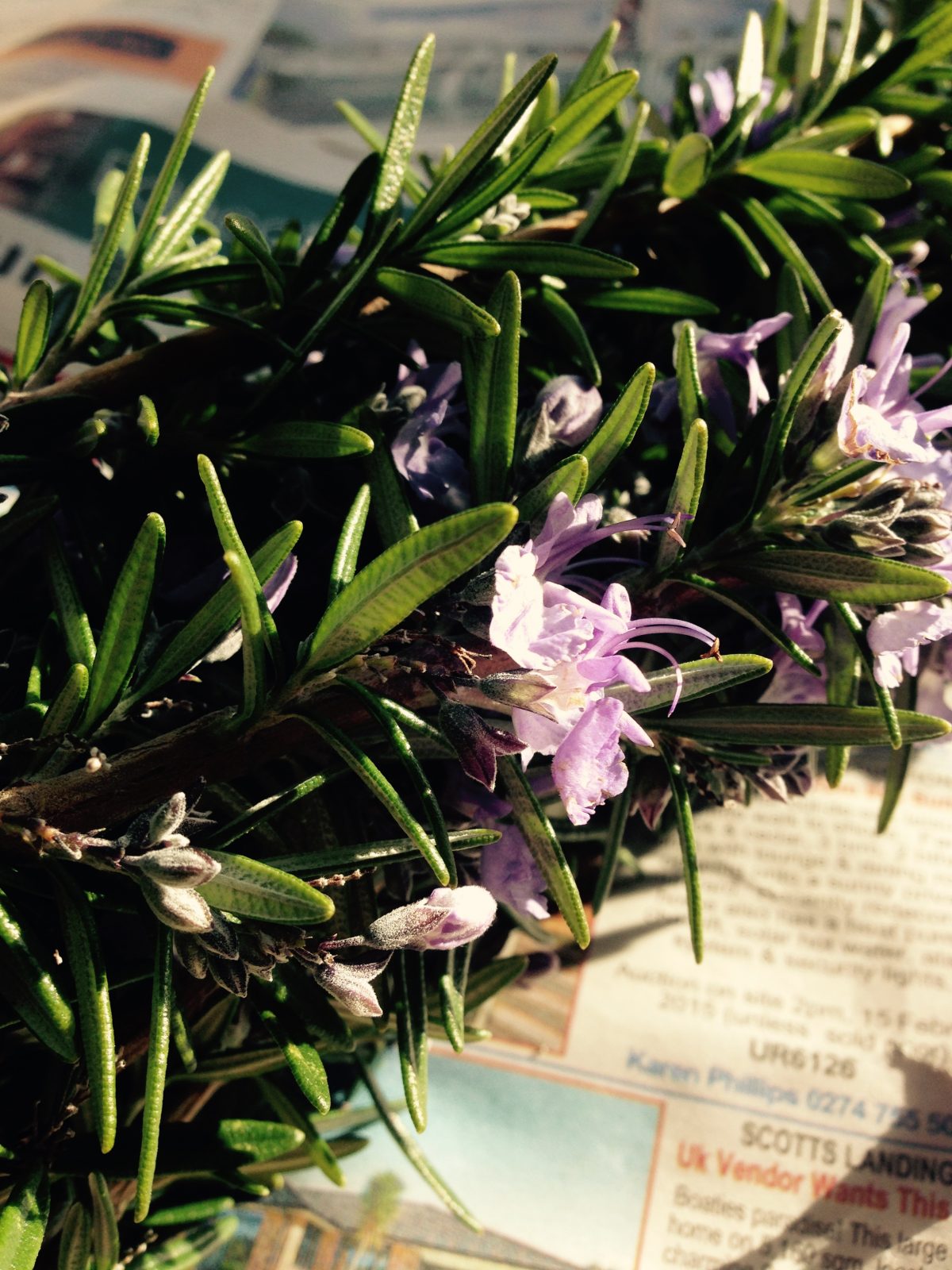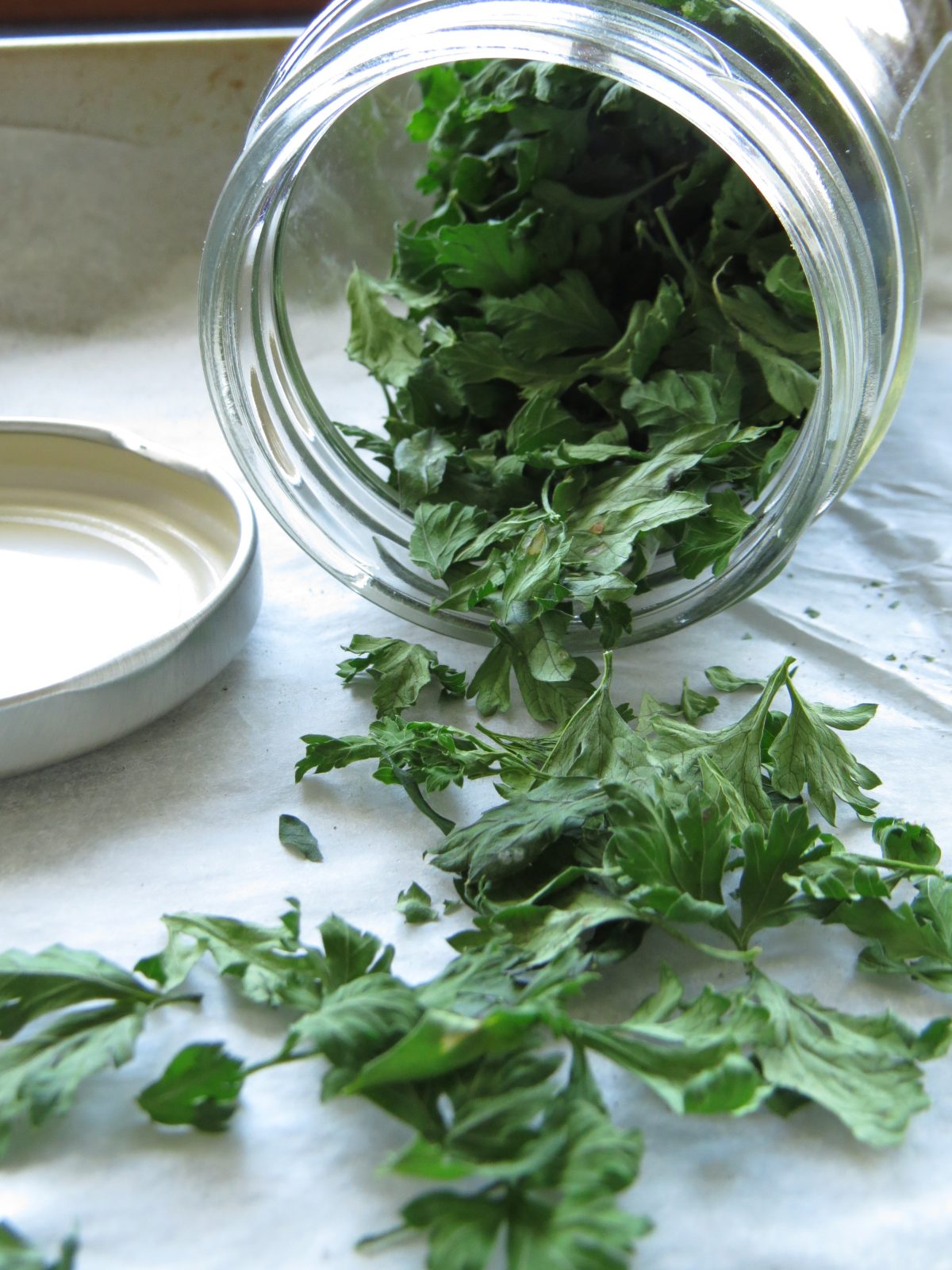A slight ‘segway’ from my current project, my very own veggie garden makeover, today saw me (a) trimming my rosemary ‘tree’ into an orderly bush and (b) rediscovering my parsley plant under a season of rouge weeds.
This left me with overhanging branches and wayward plants that needed pruning and subsequently disposing of. After FINDING them again, I wasn’t in a hurry to compost a thing.
Nope. It was a perfect time for me to try my hand at drying herbs.
After all, I love fresh herbs. In the midst of winter, rather than a torch-light vigil to the veggie patch at dinner time, it’s nice to reach for some home-dried herbs too.
Drying herbs is a very easy process. A dehydrator makes this simple – a set and forget approach whereby the machine is set at a very low temperature (around 35-40 degrees C) and quietly hums away for several hours.
If you do not have a dehydrator, there are other ways to dry these delicious herbs. If you are patient, you can simply hang your herbs indoors and let them dry naturally. However if you are wanting to dry and store asap these can be easily dried in a very low heat oven. That’s where these instructions can help.

 Drying Rosemary
Drying Rosemary
Rosemary is a very hardy plant and I’ve had wonderful success growing this outside, rather than it being kept to the confines of a pot. Pruned back, this evergreen shrub will just keep on giving.
In summer, fresh rosemary is divine. Washed, patted dry then roughly chopped, rosemary is delicious sprinkled on just about everything — including homemade focaccia bread, when roasting tomatoes and potatoes, and in pasta dishes. When trimming wooden stems I’ve strung up bundles and had them hanging from my kitchen ceiling to dry naturally in the warm summer air.
In winter, the bonus is that its purple flowers attracts bees to the garden, the flowers are edible, and the wooden stems make for wonderful vegetarian skewers!
Here’s how I dried rosemary:
- Cut wooden stems approx 30cms
- Lightly rinse them under a cold tap
- Pat them dry with paper towels
- Line an oven tray with baking paper and preheat oven to 100ºC
- Slow bake for 30 minutes
- Once cool, simply run your fingers on either side of the wooden stem and the dried leaves will fall off
- Gather up and store in an air tight container away from heat and light
The smell coming from the oven is glorious!
Fresh rosemary leaves are soft and flexible however when dried of course, they become needle-like and crunchy. Place dried rosemary in bowl and crumble leaves between your fingers, or use a pestle and mortar. I eventually had the fabulous idea of getting out my rolling pin and pressing the dried leaves between baking paper. An easy and fast herb crumble!
Don’t be concerned if you dry some rosemary flowers too – they are edible when fresh, and therefore edible when dried.

 Drying Parsley
Drying Parsley
While my parsley plant had flourished in the wet winter soil, it had also been smothered by weeds. By the time I rescued it, it was looking a little worse for wear. Many lower sprigs were at ground level and looking rather sad. I gave the plant a good trim and decided to dry the cropped growth, rather than compost.
The result? Fab. I washed, then plucked the leaves from the stalks and left to drain for a few minutes on a paper towel. As before, I slow baked the on baking paper for approx 100ºC for 30 minutes. I was pleased it held its colour wonderfully.

 Crisp, dried parsley leaves made plenty, and easy to store whole or crushed between your fingers. Store in an airtight container.
Crisp, dried parsley leaves made plenty, and easy to store whole or crushed between your fingers. Store in an airtight container.
Note: if you are tempted to buy fresh herbs from the supermarket but have no intention or ability to eat them all without wastage, dry them and enjoy at your leisure!
Enjoy!




